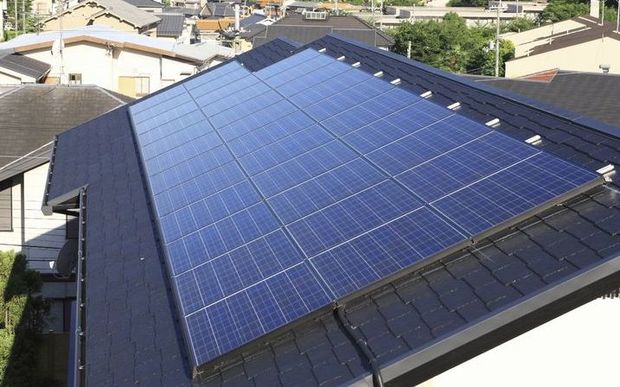Energy users and researchers say new technology could heat up an already growing enthusiasm for solar panels in New Zealand.
Figures released by the Electricity Networks Association, which represents electricity distributors, show the number of solar power systems across the country has more than tripled in the last 18 months.

Photo: 123RF
Photovoltaic systems in New Zealand in October 2013 numbered 1630, but by March this year had climbed to 5367.
The figures were released just weeks after distribution company Vector announced a partnership with US technology company Tesla to bring its new large storage batteries to New Zealand.
Electricity Networks Association chief executive Graeme Peters said it was still just a blip in the market so far.
But as more people switched to solar power, it created questions for power companies, particularly around what was fair, he said.
"If you have a solar electricity-generating array then that means that your overall power bill will be lower and that means you can access the low-user fixed charge.
"The amount of money that you'll be paying for maintaining the lines network is reduced, so that increases the cost-subsidy to people who don't have solar power, so that raises all of these issues."
While Aucklanders led the way in sheer numbers, the Tasman and Nelson districts were leading the pack proportionally.
In Tasman district, there were 41 solar power systems for every 10,000 people, compared with a national average of 12.
Nelson resident Carolyn Hughes, who installed her panels in 2011, said it was more than just the region's sunny reputation driving solar's growth there.
"There are quite a few people, particularly in Tasman, who live fairly remotely, who sometimes want to go off the grid entirely," Ms Hughes said.
"There are also quite a few communities - eco-villages, I suppose you'd call them - who look seriously at community-owned photo-voltaic [systems]."
One of the big problems for solar users was how to store energy when they were not using it, she said.
As a result, Vector's call for expressions of interest in Tesla's new lithium ion batteries, which store large amounts of energy in a small space, had got her attention.
"We're watching Tesla and watching Panasonic, and seeing who comes out with a better deal, really - and of course, as time moves on, the cost will go down."
The pay-back period for a photovoltaic system had dropped to about 10 years with the average system lasting 25 years, Ms Hughes said.
However, deputy director of Otago University's Centre for Sustainability Rebecca Ford said the upfront cost was still a major barrier for many people.
The increasing involvement from power and lines companies, such as Vector's partnership with Tesla, was positive however, she said.
"I think the distribution companies are starting to realise that if enough people do take up solar there could be a bit of a problem for them, looking forward, with their infrastructure [so] I think it's really exciting that Vector are getting into this game."
Financially, the new batteries did not seem to stack up yet, Dr Ford said.
However, they could become a much more attractive option as the cost came down and the energy market changed, she said.
Source - Radio New Zealand
